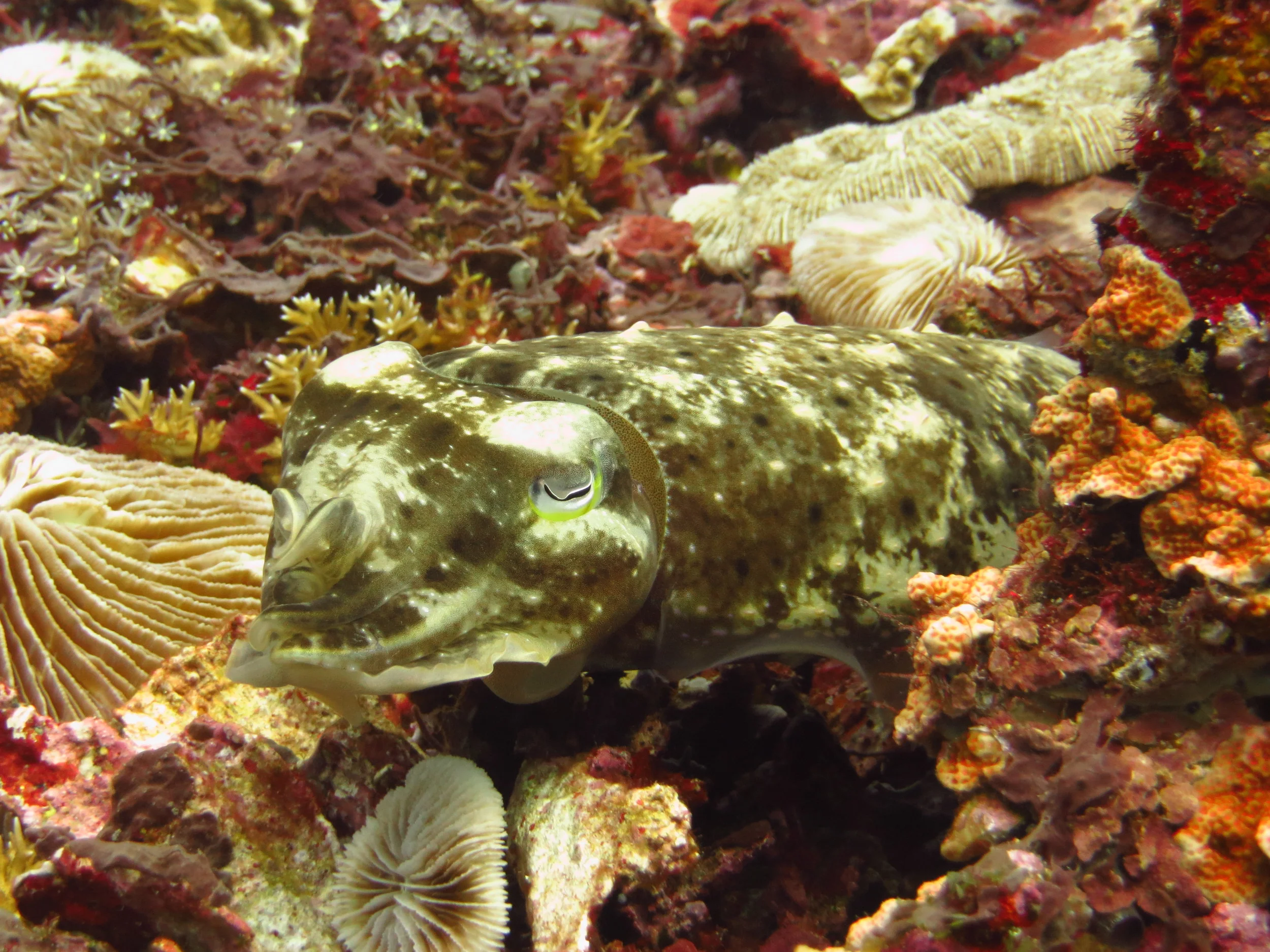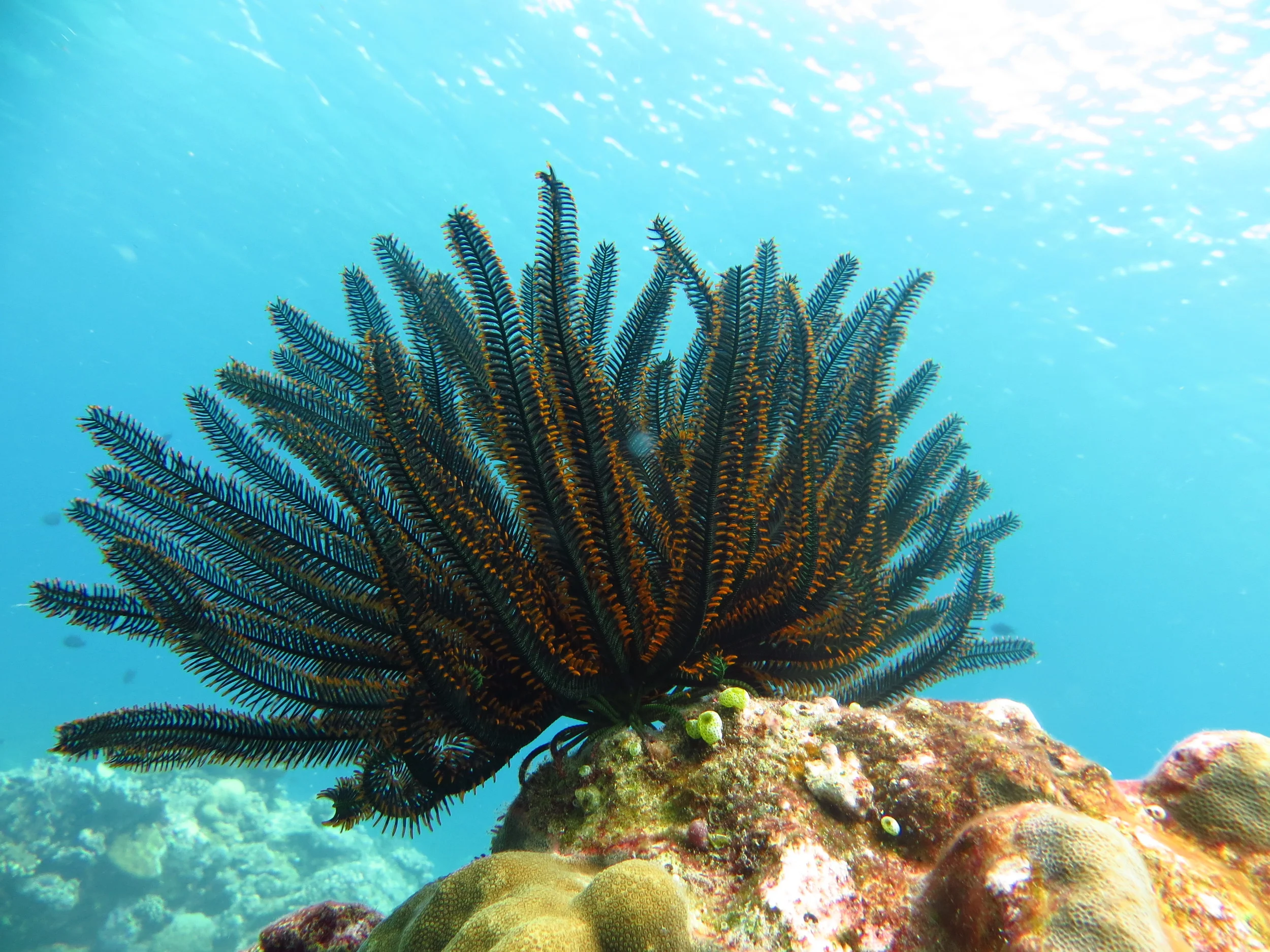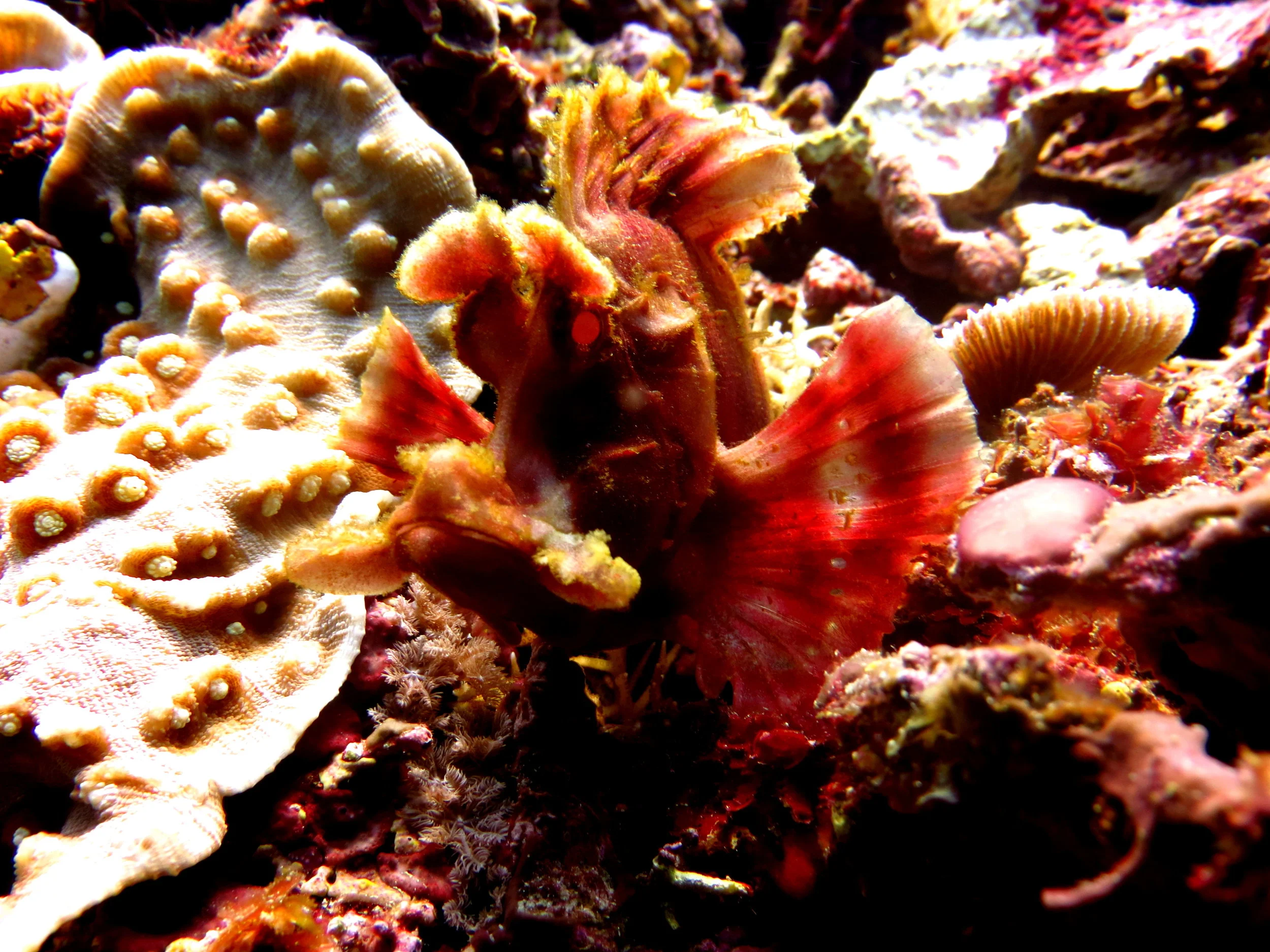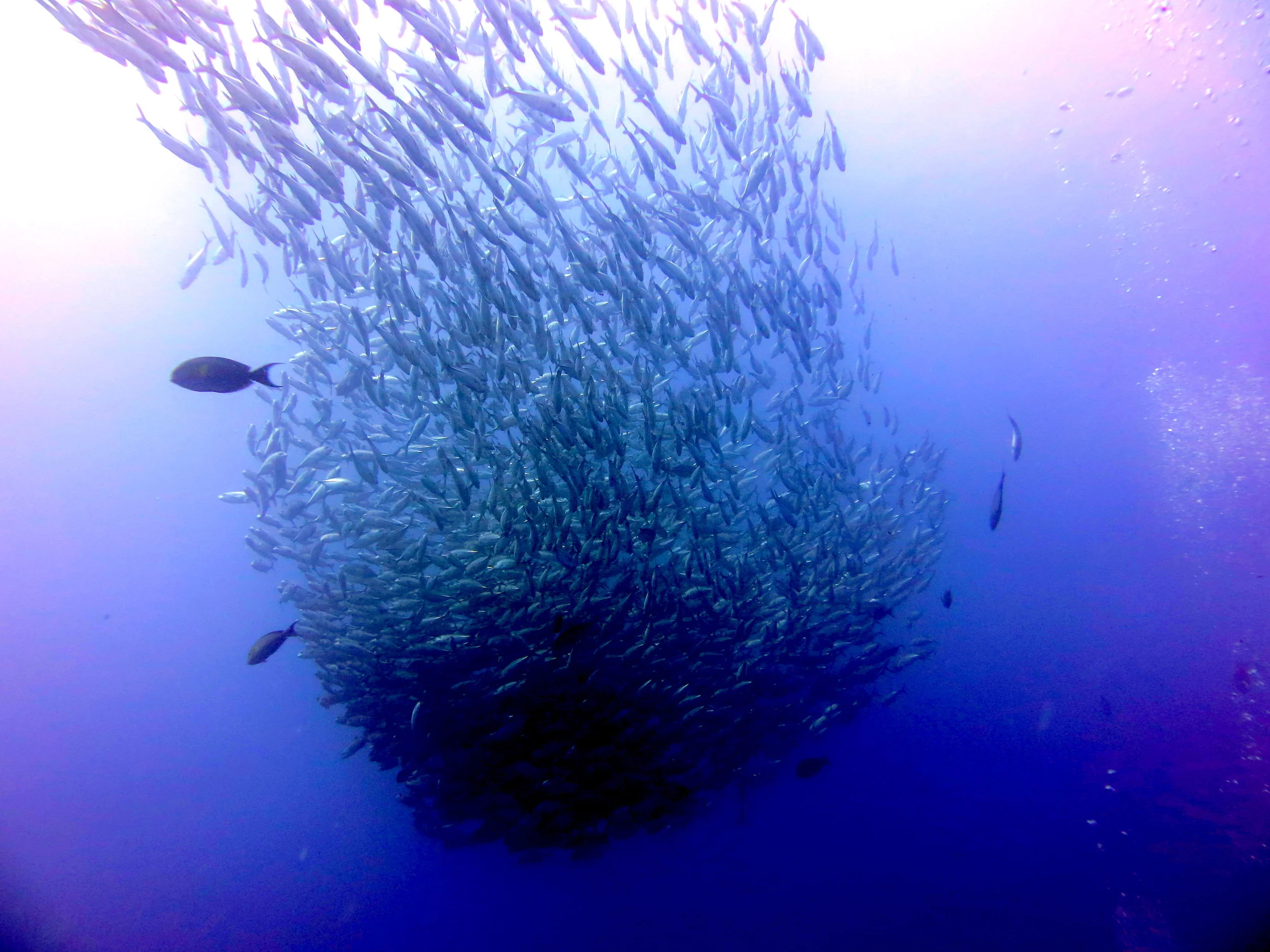7 Tips to improve your underwater photos
1. WHITE BALANCE IS KEY!
The reason some underwater photos appear blue is that certain color wavelengths disappear as we go deeper, red being the first one to go. Cameras shoot/record what they see, so if red is missing from the object no red will end up one the photo, make sense?
The key to bringing back these colors is to take something white down with you (for example a white slate) and take a photo of this subject, which tells the camera this color is white. This makes the camera adjust accordingly and will remove some of the blues and greens, adding reds and making your photo appear balanced. There is however a fine line between white balancing your camera too much and too little.
The best way to find out the perfect setting for your camera is just to go out and dive, and practice, practice, practice!
2. Get closer to your subject
Underwater photography not only means that you are shooting in a completely different element where the space is denser, it also means the light, color, and particles (called backscatter in the photography world) will change the outcome of your picture.
To reduce the backscatter you need to get closer to the subject which reduces the amount of particles actually entering the photograph. Note: Before getting close to the animal you are about to snap a pic of, let it get comfortable with you in its surroundings. Slowly get closer and when you think you are finally close enough, go even closer! (without harassing it of course)
3. Up, up and up
Despite how we normally dive (looking down to the reef), a photo will usually look better is you shoot it upwards. This allows the light be a part of the photo and will make a huge difference on the quality of your photo. Try and go down below or on the same level as your subject whilst bringing in the rule of thirds and you will take a winning shot every time!
4. How do you like it?
Every photographer wants their photos to have a different look. Keeping your camera in the automatic setting will not give you the result that you are looking for, because it is automatic. For best results, use the manual setting of your camera. Play with the aperture and shutter speed to find a result that fits you. Don’t be afraid to change the settings underwater as the light and other factors vary as the dive progresses to different depths and visibility. Read up on the difference between the two and practice on land. The better understanding you have about your camera above water, the better the pictures will be under the surface.
5. Some make up here and there
We all know how beautiful the underwater world is and how it never seems to translate to a photograph however well you might understand your camera. You should always strive to make the photograph as good as possible, but even the pros improve their images by using an editing program to enhance their photos and give them the final ‘umpf’ that’s missing. It might feel like cheating, but it is actually a natural process of being a photographer. If you feel unsure on how to use editing programs, there are lots of free tutorials online and easy editing programs to download on your computer or tablet.
6. Composition of the photography
Why are some photos or pieces of art more attractive than others? Composition has a big effect in how we experience art and why certain images are more likable than others. The most ‘famous’ rule is the rule of thirds, which in context to underwater photography means that the bottom section of your image shows coral or a piece of the ground, the middle part shows the subject, preferably a bit to the side, and lastly the top part is giving us water. Bringing all these parts in to the photograph will give it more depth and make your photo more intriguing. We are naturally more drawn to the face of a subject, so even though it is hard, try and take the picture of your fish subject from the front (rather than just the dorsal fin).
7. Buoyancy first
No matter how well you understand how your camera works and are a master of composition, if you don’t have your buoyancy under control your photos will never get the final result you are looking for. First and foremost to be a competent underwater photographer you need to focus on your diving skills, trim, and finning before attempting to bring a camera underwater. Try and hover closely to the reef without touching or agitating the bottom because this is most likely how you will be positioned when you take photographs later.
Finally...
Practice makes perfect so don’t be afraid to take some bad photos in order to get some good ones. Play with your camera on land and underwater, the more time you spend with your device, the better result you will get! Good luck and have fun!




